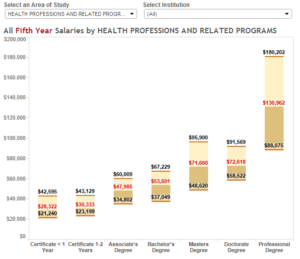The Utah Data Alliance (UDA) is a partnership seeking to increase the use and efficiency of data across multiple levels of education. The Utah System of Higher Education (USHE) is one of six partners working to make education data more accessible and usable through sound and secure practices. The other five partners are: The Department of Workforce Services, The Utah College of Applied Technology, Utah Education Network, the Utah Education Policy Center (at the University of Utah), and the Utah State Office of Education.
USHE has used a central data warehouse since 1997, from which an annual data book has been published. The Data Book provides aggregate data in key areas such as budgeting, degree awards, staffing, salaries, and facilities. Higher education is a large enterprise with many moving pieces, thus it is critical that this data is accessible, credible, and transparent.
In 2009, USHE was a supporting partner to the Utah State Office of Education in securing federal funds to establish a state longitudinal data system (SLDS) that includes postsecondary and workforce information. The funding was to motivate states in establishing statewide education data systems to enable better decision-making in education. A significant portion of these funds were to assist USOE in many of its efforts to establish state-level K-12 data systems. These funds were used by UDA partners for the establishment of a multi-entity data warehouse in which data historically housed in separate silos could now be shared. From 2011-2012, UDA partners built the essential technological infrastrucure to make this possible. In 2013, data quality and analysis began.
In 2014, the Utah legislature extended its support of UDA via SB34 that provided ongoing funds to continue its efforts. Those funds provide the needed staffing resources and technology licensing to maintain current UDA efforts.
Some examples of USHE-led initiatives utilizing UDA resources:
Industries in which USHE graduates are employed – 1st year after college
An interactive bubble chart illustrating where graduates from USHE institutions are employed the first year after completing college. Users can select by field of study, institution, and academic year.
The data is based on employment one-year post graduation. Industry definitions are from the US Bureau of Labor and Statistics. There are many graduates of USHE institutions for whom their employment status is unknown. For example, they are unemployed, employed out of state, or a connection to a field of employment is unknown.
Utah Wage Information by Field of Study
The interactive illustrates the range of wages of college graduates 5 years after graduation. Users can search by Area of Study and institution. This information was compiled by the Utah System of Higher Education – Office of the Commissioner, through its partnership with the Utah Data Alliance. It utilizes data from the Utah Department of Workforce Services.
There are some inherent factors that, if ignored, can lead to misinterpretation. For example, geography, specific circumstances of an individual or business, or current economic and regulatory conditions can significantly impact an individual’s wage potential.
High School Feedback Report Pilot
A pilot between USHE and 3 school districts to provide an annual summarized report of key success metrics of a district’s high school graduates. For example, how many enrolled in college, average GPA, percentage of students enrolling in developmental math, etc. This initiative is currently a pilot to help validate data received by USHE via the Utah Data Alliance, as well as explore the best use of longitudinal data that helps K-12 administrators better understand the success outcomes of high school graduates. The pilot was limited to 3 school districts because of limited resources and efforts required to validate the most current data available.
Report: Building Utah’s Future Through Higher Education
This report, published in April 2014, estimates the Return on Investment (ROI) if the state were to achieve the aggressive goal set by the Governor and supported by the state legislature that by the year 2020, 66% of Utah’s adult population will have earned a post-secondary degree or certificate. Also known as the 66by2020 goal, it is focused on Utahns ages 25-35 in 2020. This document estimates some of the potential economic impacts that attaining this goal will have on Utah’s tax base, economy and poverty levels, both annually and in 30 years. For example, it estimates that reaching this goal will result in $14.4 billion added to the Utah economy in increased wages over 30 years. In addition, it is estimated that 42,057 Utahns will escape the cycle of intergenerational poverty through greater educational attainment.
Data Security
All of the UDA partner agencies operate under the requirements of the Family Educational Rights and Privacy ACT (FERPA), a federal law defining requirements of education data ownership, use, and sharing; including the prohibited sale of a student’s personally identifiable information. It also adheres to all other applicable federal and state laws pertaining to data management. In addition, the education data in the UDA data warehouse follows strict technological protocols to ensure the most secure environment possible. UDA partners, agencies with a long history of successfully of securely maintaining sensitive information, place a top priority on their data stewardship responsibilities to Utah taxpayers.

